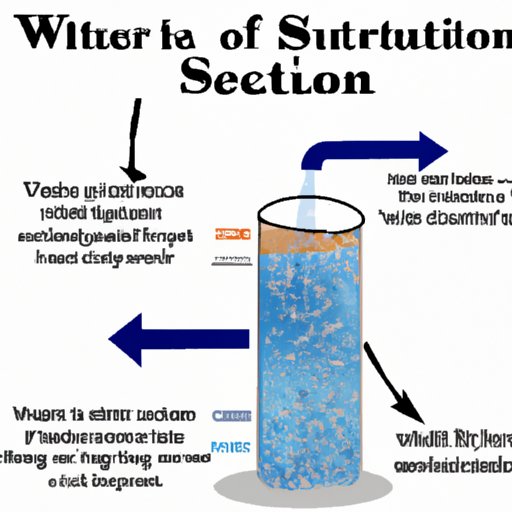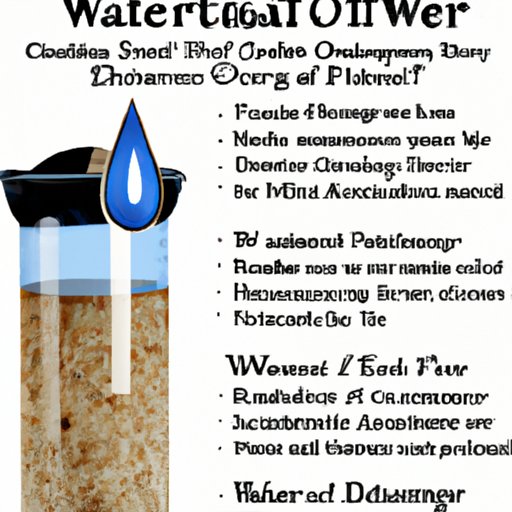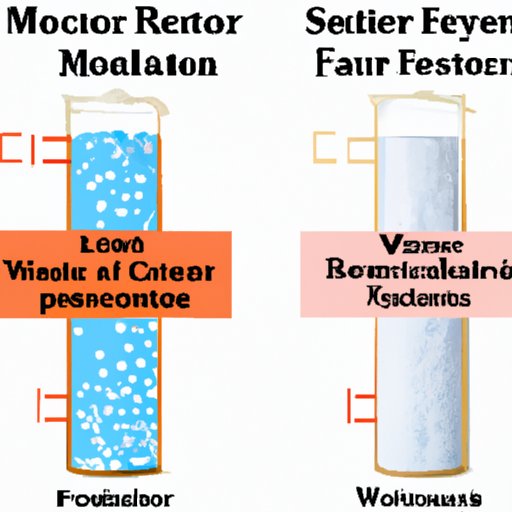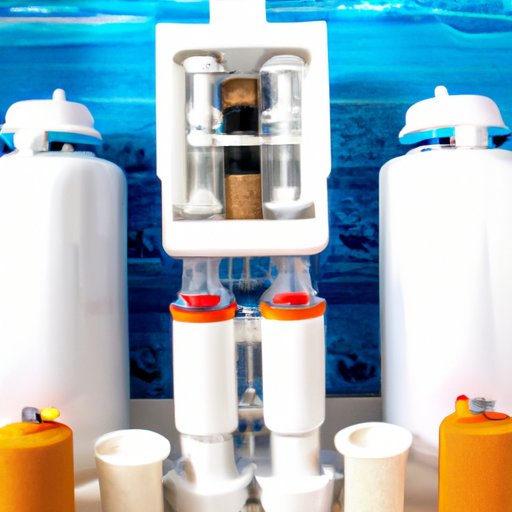An Overview of How Water Softening Works
Water softening is a process used to remove certain minerals, such as calcium and magnesium, from hard water. Hard water is water that has a high mineral content, which can cause issues with taste, odor, and scaling in pipes and appliances. By removing these minerals, water softening makes water easier to use and improves its quality.
Hard water is caused by an excess of dissolved minerals such as calcium and magnesium. These minerals are found naturally in most water sources, but too much of them can lead to problems. As the water moves through pipes and other plumbing fixtures, it can leave behind deposits of these minerals, resulting in scale buildup and clogged pipes. It can also give water an unpleasant taste and odor.
The principles behind water softening are relatively simple. The process involves passing hard water through a tank filled with resin beads, which contain sodium ions. The sodium ions then replace the calcium and magnesium ions in the water, reducing its hardness. The now-softened water is then passed on to be used as usual.

Understanding the Science Behind Water Softening
Water softening uses a combination of salt and ion exchange to soften hard water. Salt is added to the water, usually in the form of sodium chloride (NaCl). This salt dissolves in the water and creates an electrolyte solution, which helps the ion exchange process take place.
The ion exchange process is the key to water softening. When the hard water passes through the tank, the resin beads attract and exchange the sodium ions for the calcium and magnesium ions. This results in a softened water that contains fewer of the minerals that contribute to its hardness.
The flow rate and regeneration cycles of a water softener also play an important role in ensuring the system works effectively. The flow rate determines how quickly the softened water is produced, while the regeneration cycle helps to maintain the efficacy of the resin beads by flushing out any accumulated minerals. This allows the system to continue to produce softened water over time.

The Benefits of Water Softening
Water softening offers a number of benefits, including improved taste and odor of drinking water, softer feeling water, and reduction in scale deposits. Hard water can have an unappetizing taste, due to the higher concentration of minerals present. Softening the water reduces this concentration, making it more palatable.
Soft water also feels softer to the touch than hard water. This is because the minerals that contribute to the hardness of the water are removed during the softening process. This makes it easier to lather up when showering or washing dishes, as well as providing a more pleasant experience overall.
Finally, water softening can help reduce scale deposits in pipes and appliances. Without softening, the minerals in hard water can accumulate and form a scale, which can reduce the efficiency of plumbing and appliances. By softening the water, these deposits are reduced, increasing the lifespan of your plumbing and appliances.

Comparing Different Types of Water Softening Methods
There are several different types of water softening systems available, each with its own advantages and disadvantages. Salt-based softeners are among the most common, using salt to replace the calcium and magnesium ions in hard water. These systems are relatively easy to install and operate, but require regular maintenance to ensure they work properly.
Magnetic softeners use magnets to reduce the hardness of water. These systems are relatively low maintenance, but their effectiveness is still debated. Reverse osmosis systems are also becoming increasingly popular, as they can remove a wider range of contaminants from water. However, they do require more expensive equipment and regular maintenance.
DIY Water Softening Solutions
If you’re looking for a DIY solution to soften your hard water, there are a few steps you can take. First, you’ll need to test your water to determine its hardness. Once you know the hardness of your water, you can choose a water softener that meets your needs. After selecting a system, you can install it yourself or hire a professional to do so.
Once your water softener is installed, it’s important to remember to perform regular maintenance. This includes checking the salt levels, inspecting the system for any signs of damage, and regularly cleaning the filter. By taking these steps, you can ensure that your water softener is working effectively and providing you with the best possible water quality.
Conclusion
Water softening is a process used to remove certain minerals from hard water, improving its taste and reducing scale buildup. The process involves passing hard water through a tank containing resin beads, which exchange the calcium and magnesium ions for sodium ions. There are several different types of water softening systems available, all of which offer their own advantages and disadvantages. With the right maintenance, a water softener can provide you with softened, better-tasting water for years to come.
(Note: Is this article not meeting your expectations? Do you have knowledge or insights to share? Unlock new opportunities and expand your reach by joining our authors team. Click Registration to join us and share your expertise with our readers.)
